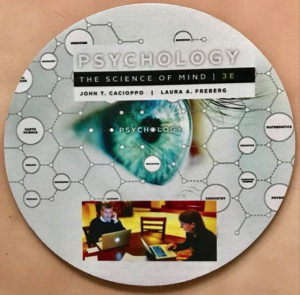
Our Mouse Pad… get one at a conference we attend!
Here’s what we are reading today:
“green tea is widely considered to be beneficial for the brain. The antioxidant and detoxifying properties of green tea extracts help fight catastrophic diseases such as Alzheimer’s. However, scientists have never fully understood how they work at the molecular level and how they could be harnessed to find better treatments.”
““Social and biological sciences over the years have demonstrated the profound desire of individuals to connect with others and the array of skills people possess to discern emotions or intentions. But, in the presence of both will and skill, people often inaccurately perceive others’ emotions,” said author Michael Kraus, PhD, of Yale University. “Our research suggests that relying on a combination of vocal and facial cues, or solely facial cues, may not be the best strategy for accurately recognizing the emotions or intentions of others.””
“Previous studies found morning bright light therapy reduced symptoms of depression in patients with Seasonal Affective Disorder (SAD.). But patients with bipolar disorder can experience side effects such as mania or mixed symptoms from this type of depression treatment. This study implemented a novel midday light therapy intervention in an effort to provide relief for bipolar depression and avoid those side effects.”
“The consumption of energy-dense foods dramatically increases in developed and developing countries. The chronic consumption of high-fat/high sugar palatable foods leads to the development of obesity, metabolic syndrome, and diabetes, but also cognitive alterations.
Adolescents are especially sensitive to palatable foods and increase their consumption of high-fat/high-sugar obesogenic diet. However, adolescence is also a critical period for cognitive and brain development.
The long-term consequences of the chronic consumption of palatable foods during adolescence are still poorly understood but might involve alterations of the reward system.
Dopamine (DA) is a neuromodulator that plays a central role in motivational and learning processes for natural rewards like palatable foods, but also for drugs of abuse.
In particular, dopamine synthesized by specific neurons in the ventral tegmental area (VTA) projecting to the nucleus accumbens (NAc) is crucial for these processes.””
“Mother’s milk contains various nutrients, including oxytocin, which is derived from the blood. The digestive tract forms a barrier to avoid uptake of undesirable macromolecules, the gut closure, soon after birth. Therefore, it was thought that oxytocin would not be freely permeable from the digestive tract. On the other hand, the oxytocin level in the blood of babies drinking mother’s milk has been found to be elevated, suggesting oxytocin could somehow be transported even in the presence of such a barrier.”
““There is a need to include sex differences in neuropsychiatric research and endocrinology because men and women do respond differently to drugs,” says first author Jordan Marrocco, a postdoctoral associate in the neuroendocrinology lab of Bruce S. McEwen, Rockefeller’s Alfred E. Mirsky Professor
Death Therapy

Laura Freberg speaking to Professor Bill Murray on the fundamentals of his new Death Therapy technique.


4 Comments
Sky Yramategui · October 24, 2017 at 8:44 am
I read through the “light therapy” article and I thought that the results that the depression / bipolar patients experienced after white light treatments were significant! They saw actual evidence in the lessening of depression and measureable effects in those with bipolar disorder. This makes me want to start waking up to natural light instead of my alarm clock app so I can stabilize and reset my circadian rhythm myself!
egonz124 · November 18, 2017 at 11:40 pm
It was interesting to me to read about how one treatment can affect two closely related disorders quite differently. It’s understandable that those that suffer from SAD would react quite positively, but what caused those who suffer from bipolar disorder to react with mania? I wonder what neurotransmitters/ neurochemicals play into such different reactions.
madisonklein118 · February 23, 2018 at 8:50 am
I too found the article about light therapy particularly interesting, mostly because I am a local Seattlite and I know many people who use light therapy. Before reading that article I was not even aware that there was a specific time of day that one should use it in order for it to be most effective. A friend of mine in high school used her light in the evenings because that is when she had the most time. However using it in the mornings to reset your circadian rhythm makes a lot of sense. I would love to understand better why people living with bipolar disorder are more responsive to midday light!
haleyshaffer · March 12, 2018 at 9:41 am
I was very interested in reading the article about green tea and how it can be beneficial for people whom may be predisposed to Alzheimer’s disease. This is relevant to my life because my dad’s biological mother suffers from Alzheimer’s disease and he has been drinking green tea in leu of coffee for years now and I do not think he knows that it has any correlate with possibly delaying the onset of Alzheimer’s which is undoubtedly in his genetic line. I also know that maintaining strong cardiovascular health is important which he also does so hopefully between the two he is able to push the sad disease off for as long as possible.